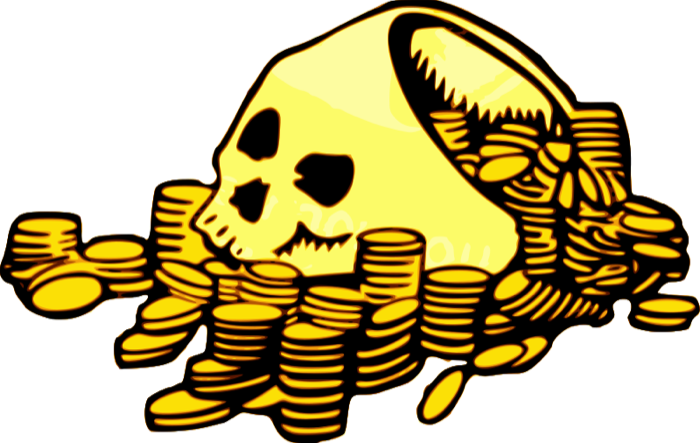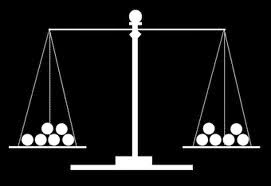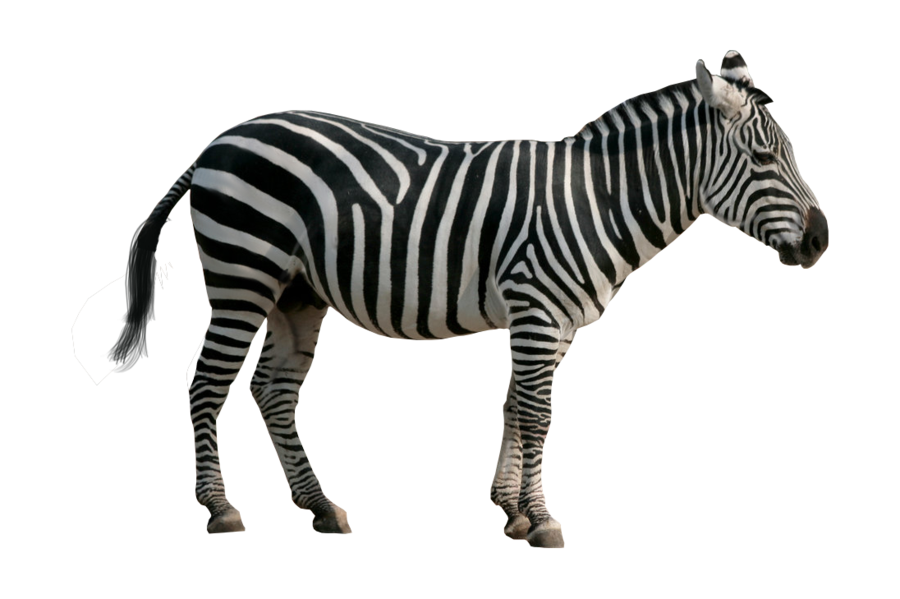Thursday, May 28, 2015
The Snail And The Well
Games Reviewer
8:13 AM
brain
,
logic
,
logic games online
,
logical puzzles
,
play puzzles online
,
puzzle
,
puzzle games
,
snail
,
well
No comments
:
There was a small snail at the bottom of a thirty foot well. In
desperation to get out, the snail was only able to climb up three feet
during the daytime, and reluctantly slide back down two feet at night.
At this pace, how many days and nights will it take the snail to reach the top of the well?
At this pace, how many days and nights will it take the snail to reach the top of the well?
The Snail And The Well Puzzle Solution
After traveling 3 feet up, then sliding 2 feet down, the snail had a net gain of 1 foot per day and night. One would think, 1 foot per day and night, 30 foot deep well, 30 days and nights! But that's wrong.After 26 days and nights, the snail is 26 feet up the well. So the snail starts the 27th day at 26 feet. At the end of the 27th day, the snail has travelled to 29 feet, but during the 27th night, it slides down to 27 feet. So, on the 28th day, the snail travels 3 feet up and reaches the top of the well.
So, the final answer is 28 days and 27 nights.
Saturday, May 23, 2015
Sailor's Delight
Games Reviewer
8:11 AM
brain
,
logic
,
logic puzzles
,
logical games
,
play puzzles online
,
puzzle
,
puzzle games
,
sailor
,
web puzzles
No comments
:
10 pirates are ranked in order, first to last. After finding a
treasure chest of 100 gold coins, they are discussing how to divide up
the booty. They allow the lowest ranked sailor to divide up the coins
and then vote on his idea. If the number of pirates who like the
division is equal to or greater than the others who don't like it, then
the boss will say, "Make it So." (The proposer of the idea also has a
vote.)
Otherwise... well, being pirates their simple solution is to dump the unfortunate sailor into the deep blue sea and let the next pirate in line decide how to divide up the spoils.

How many pirates will be thrown into the sea?
Otherwise... well, being pirates their simple solution is to dump the unfortunate sailor into the deep blue sea and let the next pirate in line decide how to divide up the spoils.

How many pirates will be thrown into the sea?
Notes:
- Pirates are smart, want money, and love life, especially their own!
- This one is harder than average. If you are stuck, think of fewer pirates...
- Why would #1 ever vote for any schemes?
- Why would #2 ever vote for any schemes?
- ... hmmmm
Sailor's Delight Puzzle Solution
We asked you readers to send us a solution to this puzzle, and we kept an open mind about it.The first person with a simple, elegant, and, in our opinion, valid solution, is Saurabh Gupta, a faithful reader and avid puzzler. Here is Saurabh's solution.
How many pirates will be thrown into the sea? None. And the correct distribution is:
| Pirate with rank |
Number of coins |
|---|---|
| 1 | 0 |
| 2 | 1 |
| 3 | 0 |
| 4 | 1 |
| 5 | 0 |
| 6 | 1 |
| 7 | 0 |
| 8 | 1 |
| 9 | 0 |
| 10 | 96 |
Pirate 10 divided the coins. He will get the votes of pirates 2, 4, 6, 8, and himself. This is taking into consideration what each of the pirates will get if this plan is not passed.
Starting with a situation when there is only pirate 1. He keeps all the 100 coins for himself and live happily by passing the division with his only vote.
In case that there are two pirates, pirate 2 divides and he keeps 100 coins for himself while giving none to pirate 1. He still gets the division passed with his vote and live happily ever after.
In case there are three pirates, pirate 3 divides and gives pirate 1 a single coin and keeps the other 99 coins for himself. Pirate 1 would now vote in his favor because if he votes against, then pirate 2 would get a chance to divide and would keep all the loot for himself.
If four pirates are present, pirate 4 divides and now gives pirate 2 a single coin to gain his vote (who otherwise gets nothing if pirate 3 has a chance to divide the coins). In this case, pirates 1 and 3 get nothing.
Therefore, in a similar manner, the distribution when there is an extra pirate is achieved as follows:
|
|
|
||||||||||||||||||||||||||||||||||||||||||||||||||||||||||||||||||
|
|
|
||||||||||||||||||||||||||||||||||||||||||||||||||||||||||||||||||
There is, however, still some doubt about this solution. After all, it was said that pirates are smart. With this solution, based on a method of dividing the booty supposedly approved by all, it is shown that only one (the last one) is very smart, while 4 of them get only a coin, and 5 of them get nothing. This seems to be in conflict with the statement that pirates are smart. Even if the method was approved only by half of them (the ones who get at least a coin), 4 of these voters don't seem very smart if they get only one coin. Certainly, it couldn't have been a dictatorship decision taken by the leader, as he ends up empty-handed.
An alternative, to make the pirates look brighter, is that the dividing pirate actually shares the loot evenly between the pirates likely to give him a positive vote. In that case, the pirates who previously got only one coin, end up getting just as much as the lowest ranked, while the others get nothing again. This would entail the following solution:
| Pirate with rank |
Number of coins |
|---|---|
| 1 | 0 |
| 2 | 20 |
| 3 | 0 |
| 4 | 20 |
| 5 | 0 |
| 6 | 20 |
| 7 | 0 |
| 8 | 20 |
| 9 | 0 |
| 10 | 20 |
This alternative solution, however, defies a bit the mechanism of the division logic and process explained in the main solution. Perhaps, it would be fair to make a re-wording of the puzzle, stating that, although pirates are smart, the method of dividing the booty is forced on them by some external entity, and no pirate, not even the leader, can oppose to it. However, a rewording of the puzzle will NOT take place, as this is how it was presented on Brent's page, and we are going to preserve it.
Also, it might be possible that this is not the only acceptable solution, and another alternative solution might exist, that doesn't raise any doubts with the puzzle premises.
So, we are still asking you: send us your solution!
Monday, May 18, 2015
12 Balls
Games Reviewer
8:09 AM
balls
,
balls puzzle
,
brain
,
logic
,
logical games
,
play puzzle games
,
puzzle
,
stimulate brain activity
No comments
:

You have twelve balls that all weigh the same except one, which is either slightly lighter or slightly heavier. The only tool you have is a balance scale that can only tell you which side is heavier.
Using only three weighings, how can you deduce, without a shadow of a doubt, which is the odd one out, and if it is heavier or lighter than the others?
12 Balls Puzzle Solution
We found a good solution to this puzzle on the Cut The Knot website. They show a solution taken from the book Mathematical Spectrum, by Brian D. Bundy. Bundy shows two solutions: the first one requires different courses of action depending on the outcome of previous weighings, so it is not particularly elegant or easy to remember. The second solution involves a fixed course of action in all circumstances, and is the one that follows.In this method we weigh four specified balls against four other specified balls in each of the three weighings and note the result. If we observe say the left hand side of the balance, then for an individual weighing there are three possible alternatives: the left hand side is heavy (>), light (<) or equal (=) as compared with the right hand side of the balance.
Since three weighings are allowed, the number of different results that can be obtained is just the number of arrangements (with repetitions allowed) of the three symbols >, <, =, i.e. 3 3 = 27. If we use all twelve balls in the three weighings, and ensure that no particular ball appears on the same side of the balance in all three weighings, the outcomes >>>, <<<, === are not possible. We thus have only 24 possible outcomes and we shall show that it is possible to set up a one to one correspondence between these 24 outcomes and the conclusion that a particular ball among the twelve is heavy or light.
The 24 outcomes can be divided into two groups of twelve in each group. If we call the reverse of an outcome the outcome obtained by replacing > by <, < by > and leaving = unchanged, one group of twelve will be the reverses of the other group and vice versa. We can thus write the 24 outcomes in the form of two arrays, each array having three rows (the three weighings) and twelve columns (the twelve balls), so that each row contains four >'s, four <'s and four ='s. Thus we have, for example,
< = = = < < > > > < > =
= > < = > = < > > = < <
A B C D E F G H I J K L
< < < < > > > > = = = =
> = = = > > < < < > < =
= < > = < = > < < = > >
Wednesday, May 13, 2015
Hugh's Horses
Games Reviewer
8:07 AM
brain
,
horses
,
logic
,
logical puzzles
,
play puzzles online
,
puzzle
,
puzzle games
,
riddle online
No comments
:
A horse breeder goes to a horse show with a certain number of horses.
The first buyer comes by and purchases half of the horses the breeder
brought plus half a horse. The second buyer comes by and purchases half
of what remains plus half a horse. The third buyer comes by and
purchases half of what remains plus half a horse. The breeder leaves,
satisfied that he has sold all the horses he brought.
All three buyers have purchased whole horses, and there is no shared ownership among them.
How many horses did the breeder bring to the show?
All three buyers have purchased whole horses, and there is no shared ownership among them.
How many horses did the breeder bring to the show?
Hugh's Horses Puzzle Solution
(0.5 + 0.5) + (0.5 + 1.5) + (0.5 + 3.5) = 7.Or here's a an algebraic solution kindy submitted by Greg Bradshaw. Thanks!
Solve for x where x is the total number of horses:
x = (.5x + .5) + (.5(.5x - .5) + .5) + (.5[.5{.5x - .5} - .5] + .5)
x = .5x + .5 + .25x - .25 + .5 + .5(.25x - .25 -.5) + .5
x = .5x + .5 + .25x + .25 + .5(.25x - .75) + .5
x = .5x + .5 + .25x + .25 + .125x - .375 + .5
x = .5x + .5 + .25x + .25 + .125x + .125
x = .875x + .875
.125x = .875
x = .875/.125
x = 7
Friday, May 8, 2015
The Dog Situation
Games Reviewer
8:05 AM
brain
,
dog
,
dog situation puzzle
,
logic
,
logical games
,
play puzzle games online
,
puzzle
,
puzzle games
No comments
:

Of the eight dogs, three are cocker spaniels, three are terriers, and two are dachshunds. None of the four boys owns two dogs of the same breed. No two dogs of the same breed have the same name. Neither of Alec's dogs is named David and neither of Charlie's dogs is named Alec. No cocker spaniel is named Alec, and no terrier is named David. Bob does not own a terrier.
What are the names of the dachshunds, and who are their owners?
The Dog Situation Puzzle Solution
One of the dachshunds is owned by Bob and is named Alec, while the other is owned by Charlie and is called David.To get to the solution, let's gather all the information we're given:
1 Each boy has named his dogs after two of his brothers
2 Each boy has two doggy namesakes
3 There are 3 cocker spaniels, 3 terriers, and 2 dachshunds
4 None of the four boys owns two dogs of the same breed
5 No two dogs of the same breed have the same name
6 Neither of Alec's dogs is named David
7 Neither of Charlie's dogs is named Alec
8 No cocker spaniel is named Alec
9 No terrier is named David
10 Bob does not own a terrier
With this info, it follows that:
11 Alec's dogs are named Bob and Charlie (from 6 and 1)
12 Charlie's dogs are named Bob and David (from 7 and 1)
13 David's dogs are named Alec and Charlie (from 11, 12, 1 and 2)
14 Bob's dogs are named Alec and David (from 11, 12, 13, 1 and 2)
15 Bob's dogs are a cocker and a dachshund (from 3, 4 and 10)
16 The 3 cockers are called Bob, Charlie, and David (from 3, 5 and 8)
17 The 3 terriers are called Alec, Bob, and Charlie (from 3, 5 and 9)
18 The 2 dachshunds are called Alec and David, because the names Bob and Charlie are already taken by cockers and terriers (from 2, 3, 16 and 17)
19 Bob's dachshund must be called Alec, because there are no cockers with that name (from 14, 15, 16 and 18)
20 Bob's cocker is called David (from 14, 15, 16, 18 and 19)
21 The dachshund called David must belong to Charlie (from 12, 18 and 20)
Deductions 19 and 21 have given us the solution to the puzzle.
Sunday, May 3, 2015
Who Owns The Zebra?
Games Reviewer
8:03 AM
brain
,
logic
,
logical games
,
logical puzzles
,
puzzle
,
puzzle games
,
zebra
,
zebra puzzle
No comments
:
There are five houses.
Each house has its own unique color.
All house owners are of different nationalities.
They all have different pets.
They all drink different drinks.
They all smoke different cigarettes.
The English man lives in the red house.
The Swede has a dog.
The Dane drinks tea.
The green house is on the left side of the white house.
They drink coffee in the green house.
The man who smokes Pall Mall has birds.
In the yellow house they smoke Dunhill.
In the middle house they drink milk.
The Norwegian lives in the first house.
The man who smokes Blend lives in the house next to the house with cats.
In the house next to the house where they have a horse, they smoke Dunhill.
The man who smokes Blue Master drinks beer.
The German smokes Prince.
The Norwegian lives next to the blue house.
They drink water in the house next to the house where they smoke Blend.
So, who owns the Zebra?

Each house has its own unique color.
All house owners are of different nationalities.
They all have different pets.
They all drink different drinks.
They all smoke different cigarettes.
The English man lives in the red house.
The Swede has a dog.
The Dane drinks tea.
The green house is on the left side of the white house.
They drink coffee in the green house.
The man who smokes Pall Mall has birds.
In the yellow house they smoke Dunhill.
In the middle house they drink milk.
The Norwegian lives in the first house.
The man who smokes Blend lives in the house next to the house with cats.
In the house next to the house where they have a horse, they smoke Dunhill.
The man who smokes Blue Master drinks beer.
The German smokes Prince.
The Norwegian lives next to the blue house.
They drink water in the house next to the house where they smoke Blend.
So, who owns the Zebra?

Who Owns The Zebra? Puzzle Solution
The German owns the zebra!| #1 | #2 | #3 | #4 | #5 | |
|---|---|---|---|---|---|
| Nationality | Norwegian | Dane | English | German | Swede |
| Colour | Yellow | Blue | Red | Green | White |
| Drink | Water | Tea | Milk | Coffee | Beer |
| Cigarettes | Dunhill | Blend | Pall Mall | Prince | Blue Master |
| Pets | Cats | Horse | Birds | Zebra | Dog |
Subscribe to:
Posts
(
Atom
)







